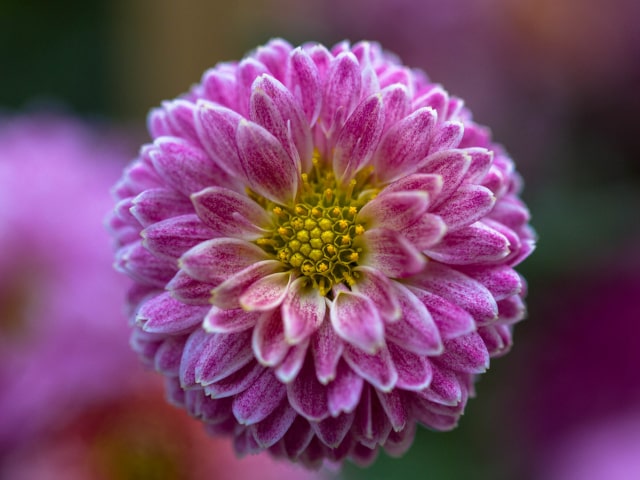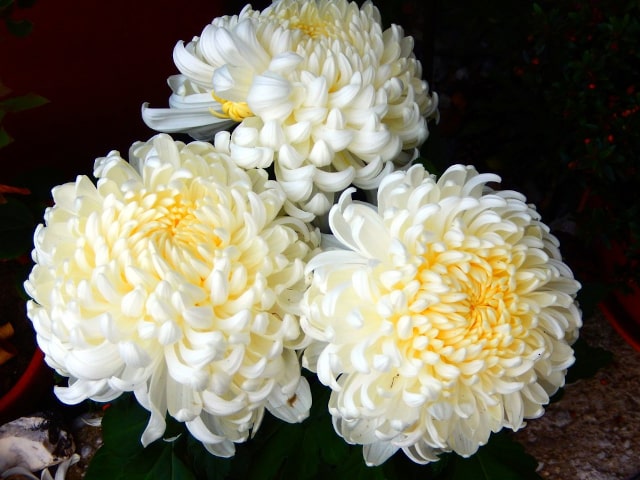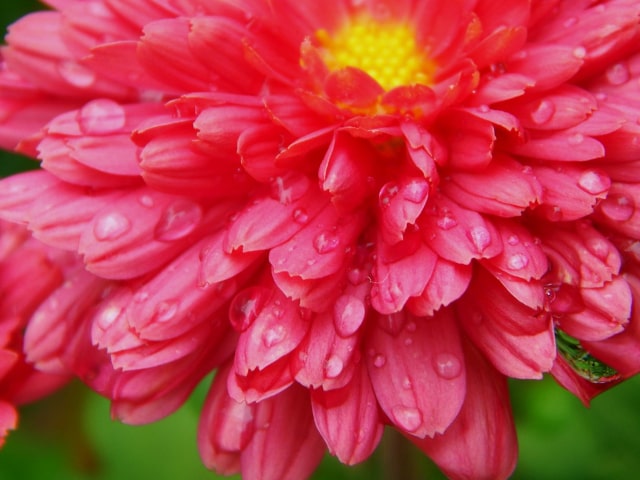
Chrysanthemums are gorgeous flowering plants that many choose for their homes. The main reason to grow Chrysanthemums are hose beautiful, bright flowers that bloom in many colors. Chrysanthemums are actually herbaceous plants that can be both annual and perennial. It actually depends on the variety.
Basic Plant Facts
Chrysanthemums are gorgeous plants with a rich history. They were originally cultivated in China around the 15th century BC. During this time, the plant was used mainly as an herb and leaves were used for eating. Several centuries later, the plant migrated to Japan. This is a plant that did well in the temperate climate of Asia.
Today, Chrysanthemum is a common house and garden plant. It looks beautiful because of its flowers. It is also a common gift plant. It is particularly popular in the US. However, it is less popular in Europe as a houseplant because it is mainly used as flowers on cemeteries.
Keep in mind that there are many Chrysanthemum types so they need a special classification system. The classification is based on the flowers. Chrysanthemum petals are florets with both sex parts. There are ray flowers and disc florets, so the classification depends on the type of florets that a specific variety has as well as some additional parameters.
Annual vs. Perennial
Annual vs. perennial Chrysanthemum - which one is better? It is important to note that both are beautiful so it might not make much of a difference for you. If you simply want to use Chrysanthemums for some seasonal color, you may go with an annual species. However, if you want to enjoy this plant for more than one year you need to get a perennial species.
A great thing about perennial Chrysanthemums is that they are very easy to grow and they will keep producing blooms year after year. This is great for those who want to enjoy these flowers for a longer time.
What Species of Chrysanthemum Do I Have?
There are hardy species of Chrysanthemums and these are the perennial ones. If you want your Chrysanthemum to come back after winter you need to choose one of these perennial, hardy species. The other species are annual and will last for only one year.
Sometimes, it is difficult to tell what kind of a Chrysanthemum you actually have. After all, they all look very similar to each other. This is why it's so important to ask at the garden center or wherever you buy your Chrysanthemums. If you are unsure and can't get an answer about the species you have, the only way to go is to wait until spring. If there are renewing leaves growing from the soil, you have a hardy variety which is a perennial. If not, your Chrysanthemum is an annual one.
The main species of annual Chrysanthemum is Chrysanthemum multicaule while the most popular form of perennial Chrysanthemum is the one that flowers in the fall, known as Chrysanthemum x morifolium.
It may be difficult or even impossible to identify which species you have. There are subtle differences you can use to try to guess the variety of the plant you have. Annual Chrysanthemums typically have thinner, strappy leaves. These are not as toothed as those that perennials have. Perennials have leaves that are wider and deeply notched.
Another difference is that perennial plants that are typically grown in gardens tend to have smaller flowers that the annual species that are generally grown in pots. However, keep in mind that these differences may be too subtle to be able to differentiate between annual and perennial Chrysanthemums.
Quick Tips for Perennial Chrysanthemums
Here are some quick and basic tips on how to care for perennial Chrysanthemums:
- These plants are known as hardy but they do need a bit of TLC to survive the winter. This is particularly true if you live in colder, harsh winter conditions.
- Perennial Chrysanthemums are hardy to United States Department of Agriculture zones 5 to 9. Keep this in mind if you want to grow your Chrysanthemums outdoors.
- Perennial species can thrive in many regions and provide much color to your garden. They are not particularly difficult to grow so it is not surprising that they are so popular.
- If you live in a cold area, make sure to add a blanket of mulch to your plants to help them survive the winter. However, make sure not to pile a lot of mulch around the stems because it may make your plant rot.
- You can plant your Chrysanthemums in pots. They can be deadheaded and placed in a well-worked soil after they finish blooming. Just make sure that the soil has good drainage.
- In the late fall, it's best to cut back the stems of your plant back to 2 inches from the ground. Alternatively, leave them until early spring.
- It is best to divide your plant every few years. This will promote the health and make your plants stronger.
- Make sure to pinch your Chrysanthemums back every 2 weeks from early spring to mid-July. This will produce tighter, compact plants with a dense covering of flowers.
- It is important to water your plants regularly and to provide it with some fertilizer in July.
Photo credit: Haroon Mughal




0 Comments